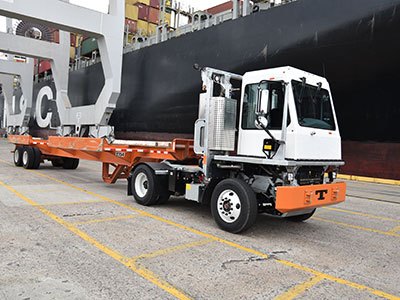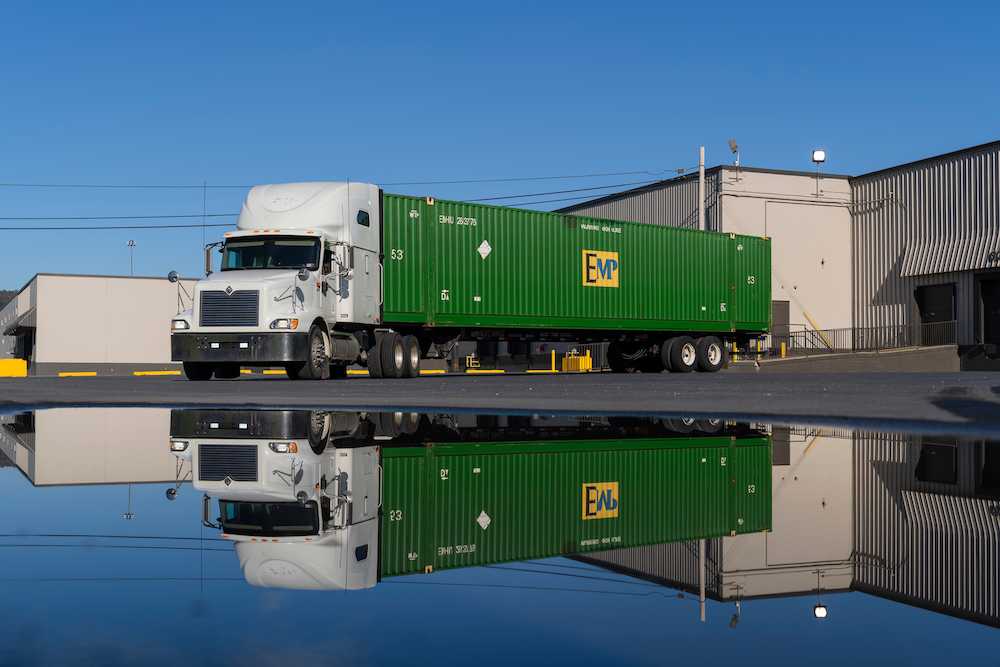Intermodal container / equipment plays a crucial role in the transportation and logistics industry, ensuring efficient and seamless movement of goods across different modes of transport such as trucks, trains, and ships. In this comprehensive guide, we will explore the various types of intermodal equipment, their uses, and why they are essential for modern-day logistics. Whether you’re a business owner looking to optimize your supply chain or a logistics professional, this article will help you better understand intermodal equipment and how it benefits your operations.
What is Intermodal Equipment?
Intermodal equipment refers to the specialized containers, trailers, chassis, and other transportation assets that allow goods to move between different forms of transport without needing to unload and reload the cargo. These assets ensure that goods remain secure and intact as they transition from one transportation mode (e.g., ship) to another (e.g., truck or rail).
This method of transportation is called intermodal transportation, which means that goods are transported using multiple methods—rail, road, and sea—without handling the cargo itself when switching between modes. By using standardized intermodal equipment, companies can efficiently ship goods across long distances, reduce shipping times, and cut costs.
Key Benefits of Intermodal Equipment:
- Cost-Efficiency: It allows for bulk transportation, reducing the need for multiple small shipments.
- Environmental Impact: Intermodal transportation often uses rail, which produces fewer carbon emissions than trucks.
- Reliability and Safety: Containers are securely locked, protecting goods from damage and theft.
Types of Intermodal Equipment

There are several types of intermodal equipment, each serving a unique purpose within the logistics chain. Understanding these various types can help businesses select the most suitable equipment for their shipping needs.
1. Intermodal Containers
Intermodal containers are large, standardized shipping containers that can be easily transferred between ships, trains, and trucks. These containers come in different sizes, the most common being 20-foot and 40-foot containers. Intermodal containers are ideal for transporting various types of cargo, from consumer goods to industrial materials. Intermodal container
Key Features:
- Durable Construction: Made from corrosion-resistant materials like steel.
- Standardized Sizes: Facilitates easy stacking and transportation.
- Versatility: Suitable for a wide range of goods including dry cargo, temperature-sensitive items, and hazardous materials.
2. Flat Rack Containers
Flat rack containers are designed for shipping oversized or heavy cargo that won’t fit inside standard containers. They have collapsible sides, making them ideal for transporting machinery, vehicles, and construction materials.
Key Features:
- Collapsible Sides: For accommodating wider loads.
- Heavy-Duty Construction: Able to carry high-weight items.
- Ease of Loading: Open design allows for easy access by cranes or forklifts.
3. Chassis
A chassis is a specialized trailer designed to carry intermodal containers. Chassis are essential in road transportation, providing a stable base for containers as they are hauled between rail terminals, shipping ports, and distribution centers.
Key Features:
- Lightweight Design: For better fuel efficiency during road transport.
- Versatility: Available in multiple configurations for different container sizes (20ft, 40ft).
- Quick Hook-Up: Compatible with most trucks, making it easy to transfer containers.
4. Refrigerated Containers (Reefers)
Reefers are intermodal containers with built-in refrigeration systems that are used to transport temperature-sensitive goods such as food, pharmaceuticals, and chemicals. These containers maintain a consistent internal temperature to ensure product quality during transit.
Key Features:
- Temperature Control: Maintains specific temperature ranges.
- Insulated Walls: Prevents external temperatures from affecting internal conditions.
- Power Supply Compatibility: Operates on standard power systems used by ships, trucks, and trains.
5. Tank Containers
Tank containers are used for transporting liquids such as chemicals, oil, and gases. These containers are cylindrical in shape and equipped with safety features to handle hazardous or flammable materials.
Key Features:
- Pressure-Controlled Systems: Ensures safe transport of liquids.
- Corrosion-Resistant Materials: Constructed from stainless steel to prevent chemical reactions.
- Specialized Designs: Available for food-grade liquids and hazardous substances.
The Importance of Choosing the Right Intermodal Equipment
Selecting the appropriate intermodal equipment is vital to optimizing the logistics process. Choosing the right equipment ensures that your cargo is transported efficiently, safely, and cost-effectively.
Here are a few factors to consider when choosing intermodal equipment for your business:
- Cargo Type: Different goods require different types of containers. For example, perishable goods need reefers, while heavy machinery may require flat racks.
- Shipping Distance: If your cargo is traveling long distances, consider using containers that are more durable and designed for long-haul journeys.
- Cost and Efficiency: Some intermodal equipment is more cost-effective than others. For instance, flat racks can be ideal for oversized cargo, while tank containers are better suited for liquids.
How Intermodal Equipment Optimizes Supply Chains
One of the greatest advantages of intermodal equipment is its ability to improve supply chain efficiency. By using standardized containers and transportation methods, businesses can streamline their operations and reduce delays. Here’s how intermodal equipment can optimize supply chains:
- Faster Shipping: Intermodal transportation allows goods to move quickly across various regions without the need to unload and reload cargo at each transfer point.
- Lower Costs: Bulk transportation via rail or sea is more cost-effective than road transport, especially for long-distance hauls.
- Less Handling, Less Damage: Containers ensure that goods remain untouched during transit, reducing the risk of damage or contamination.
- Sustainability: Intermodal equipment allows businesses to take advantage of more environmentally friendly transportation options such as rail.
Future Trends in Intermodal Equipment and Logistics
As the logistics industry evolves, we are seeing significant innovations in intermodal equipment and transportation methods. Companies are now focusing on increasing efficiency, sustainability, and automation.
1. Smart Containers
Smart containers are equipped with tracking devices and sensors that monitor cargo conditions in real-time. These containers can provide data on temperature, humidity, and location, allowing businesses to monitor the condition of their goods throughout the transportation process.
2. Sustainable Equipment
As sustainability becomes a priority for many businesses, the demand for eco-friendly intermodal equipment is growing. Companies are developing containers made from recycled materials and using renewable energy sources like solar power to reduce their carbon footprint.
3. Autonomous Vehicles and Drones
Autonomous trucks and drones are expected to play a major role in the future of intermodal transportation. These technologies can further streamline the shipping process, reducing labor costs and improving delivery times.
Conclusion: The Role of Intermodal Equipment in Modern Logistics
Intermodal equipment is at the heart of efficient and cost-effective logistics. By using the right containers, chassis, and trailers, businesses can optimize their supply chains, reduce costs, and ensure timely deliveries. As the industry continues to evolve, intermodal equipment will only become more advanced, incorporating smart technologies and sustainable practices to meet the growing demands of global trade.
Whether you’re looking to ship goods domestically or internationally, understanding the different types of intermodal equipment will help you make informed decisions that benefit your business.
For more information on purchasing intermodal equipment, visit Equip Intermodal, your trusted partner in logistics and transportation solutions.
More On Intermodal Equipment
Introduction To Shipping Containers
Purchasing Shipping Containers- New vs. Used
What Are High Cube Shipping Containers?



